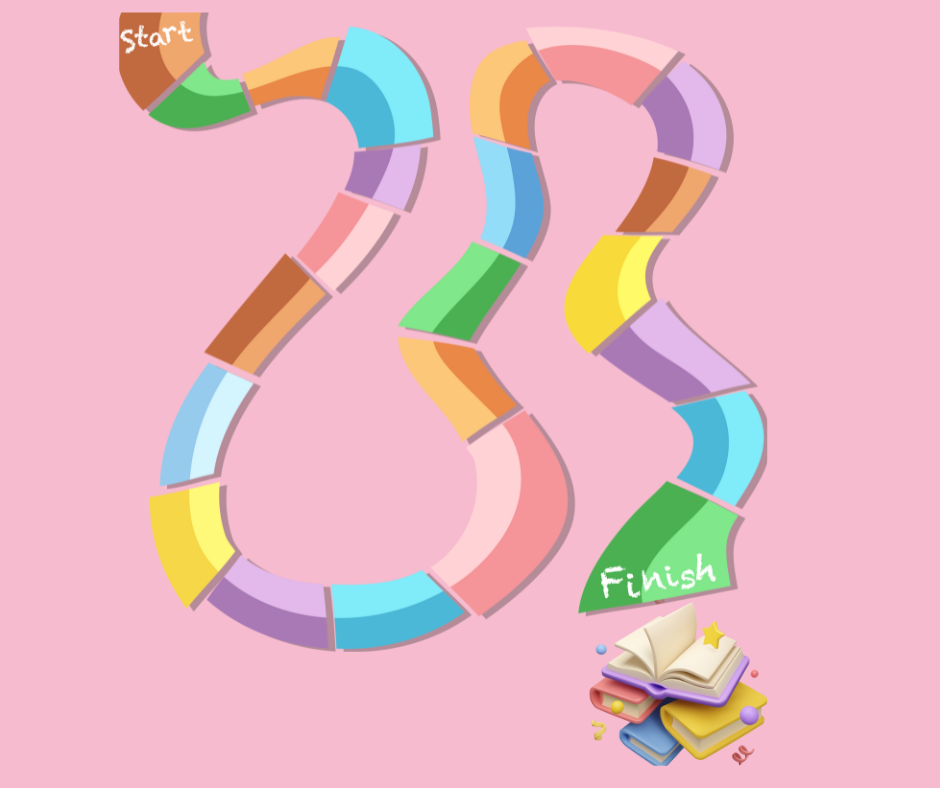12 Emerging and Expanding Income Opportunities for Romance Authors in 2024

The publishing world is in the midst of change. While change can be hard, for romance authors, it means growing opportunities to reach readers and earn a living.
In this post, we’ll do a quick review of the publishing world, particularly for indie authors, discuss why taking advantage of these opportunities is important, and learn about 12 of these options you can add to your author business.
History of Publishing
I probably don’t need to explain to you how publishing has worked in the past, but it could be helpful to have a quick review so that you can see how we’re in the midst of a change. Traditionally, authors needed to get an agent to help them sell their book to a publisher in order to get their book out into the world. The only other option was vanity publishing in which the author became their own publisher, which usually resulted in spending thousands of dollars to have boxes of books stored in their garage because they didn’t have an easy distribution.
In the early 2000s, things changed with print on demand, in which a digital version of the book could be stored and, at the time of order, be printed and sent. Along with that came the ebook. Both of these options made the creation of books easier and more affordable for authors and publishers. Plus, the Internet made selling books easier and more affordable as well.
Regardless of your feelings about Amazon, it changed the publishing landscape by opening up its publishing platform to anyone. Not only could an author publish their book in print and/or e-book, but it could be listed in Amazon’s store along side all the other books.
Following Amazon’s success, other online retailers followed suit. While many successful romance authors stick with Amazon’s KDP-Select and have their ebooks exclusively in the Kindle Unlimited program, many other authors publish wide, which means their ebooks are now available in places such as Barnes and noble, iBooks, Kobo, and more. The creation of Smashwords and Draft2Digitital, which have now merged, made it even easier for independent authors to distribute their ebooks through these other ebook retailers, as well as through other sources such as libraries.
Over the last couple of years, some of these authors have financed audiobooks, which has seen an explosion in popularity. Many of these authors have also hired translators to get their books into foreign markets.
All this has been great for the author who wants to get published but wasn’t able to get a traditional deal, or chose to go the independent route for greater control. But whether you traditionally published or self-published, distribution and sales were still through a third party, and authors have been at the mercy and whim of these platforms.
In the last year there have growing complaints on social media about how Amazon’s read-through payment rates in KDP-Select were falling, even as it raised the price for readers in the Kindle Unlimited program. Then there’s the fact that Amazon or any of these third party retailers can remove authors’ books for any reason, with very little recourse.
Because of this, many authors have taken control, not just of their publishing, but their distribution as well. These opportunities expanded in 2023, and I predict they will expand even more in 2024.
Why Consider Additional or Alternative Publishing/Distribution Options
I’ve hinted at some reasons why you should take a look at some of these additional or alternative ways to earn income from your books, but let me give you a list:
1: Royalty rate changes. I’ve already mentioned Amazon’s changes to KDP Select authors’ read-through rates in Kindle Unlimited. But any online retailer can change their royalties or how you earn them and when you get paid at any time.
2: Putting all your eggs in one basket can be risky. While KU is one basket, even wide, relying on third-party retailers can carry some risk. You have no control over what they do, and don’t get any information about your buyers to help you continue to sell to them.
3: Changing Tides in Reader Preferences. Today’s readers are consuming their content differently. More readers are using their phone to read ebooks or serialized content, or listen to audio books or podcasts. Plus, they’re also more engaged with brands they like, including authors. This means they want to interact with you, but also, they talk about you, helping you reach more readers.
4: Total control: Platforms have a say in what you post. If you’re a NSFW author, third-party platforms can limit your book’s visibility or ban you all together. Some of the options listed below give you control of what you post, how you post, and when and how you get paid.
Additional Publishing and Distribution Channels for Romance Authors
So now that you know why you should consider adding additional or alternative publishing and distribution channels, here are 12 ideas on how to do that.
Note that a few of these have been around for some time, growing a great deal in the last couple of years. Others are newer options. Some of these ideas can be done by traditionally published authors as well, BUT you’ll want to review your contract to understand what rights your publisher owns.
Also, let me preface this by saying that I haven’t tried all of these options, and those that I am doing are still in the creation or growing phases. So I’ve provided resources for you to learn more if you’re interested.
1. Publish Wide
KDP-Select offers a great opportunity for authors, unless you get banned from Amazon. There are social media posts and YouTube videos in which authors have had their accounts shut down, often with no warning or recourse. Imagine making your living through KDP-Select and one day the income stops? Scary!
By publishing wide, you distribute your eggs into multiple baskets. Plus you give non-Kindle readers a chance to read your books.
You can distribute wide to iBooks, Kobo, Barnes and Noble Nook and others. A service like Draft2Digital can help you with this. With that said, many successful wide-authors submit their books directly to the other major platforms (iBooks, Nook, Kobo) to take advantage of perks such as being a featured author.
To learn more you can check out Wide for the Win by Mark Leslie Lefebvra. There are several wide-sales oriented groups on Facebook such as Wide for the Win, including some that are genre specific.
2. Audiobooks and Podcasts
Audiobooks and podcasts are not just trends; they’re staples in storytelling today. There are several ways you can get your book into audio format. The first is to hire a narrator. For quality narration, you can expect to pay $200 to $300 per finished hour. If that’s too expensive, you can use Amazon’s ACX and royalty-share option in which you and the narrator split the royalty payment. Note that because this is an Amazon program and you’re sharing royalties, there are limitations to how you can distribute the book.
Another option is to sell audio rights to a an audio publisher. I did this because I didn’t have the money or time to manage audiobook creation on my own. You can do this as a traditional author too IF you retain your audio rights (check your publishing contract to see what rights your publisher has). Some audio publishers allow you to pitch them without an agent, while others will require an agent. And yes, there are agents that will help indie authors sell audio (and other non-print or ebook rights) to self-published books. You can check out this post on how romance authors can get an audio book deal for more information.
You can create an audio book by reading it yourself. This is a great option if you’d like to serialize your book in a podcast. Just make sure you have quality recording equipment and editing tools.
A new option that is controversial is to use AI. AI voices have improved over the last year, although it’s still not as good as human voices. The controversy is that by using AI, you’re taking a job away from a narrator. In my opinion, this is only true if you have the $2000 plus dollars to hire a narrator. If you’re in a situation in which there’s no audio of your book except for AI because you don’t have the money, then AI is something to consider. This is especially true if you’d like to have a multi-cast narration that has grown popular but is even more expensive to produce. Perhaps an AI version will help you sell more books so that later you can afford hire a narrator.
Some AI audio book options include Eleven Labs (which is what I’m using to serialize my lead magnet), Murf, and Google. Apple offers AI audiobook narration now too.
3. Foreign Rights Sales
Selling foreign rights can open doors to international markets. The German and Italian markets are good right now for romance, but they’re not the only markets.
You can hire a translator to indie publish your foreign books, or you can reach out to international publishers. An agent can help you sell foreign rights, even if your book is indie published in the U.S. You can even do it in traditional publishing IF you still hold the foreign rights to your books (check your publisher contract to know what rights they’ve taken).
Again, the controversial option is to use AI to translate. Search Google for resources that can translate your book. If you go that route, hire an editor who knows the language to make sure the translation is right. You don’t want to have an inaccurate translation that doesn’t make sense, or worse, offends readers.
4. Direct Sales
One of the best ways to protect yourself from the whims of third-party book sellers is to sell your books from your own online store. It’s easier and more affordable than ever to set up a store through Shopify, PayHip (which I like because it pays VAT), or Woocommerce, if you have a WordPress site. Ebooks and audio books can be delivered through Bookfunnel. When a sale comes in, the money goes to your bank, and the system takes care of delivering the book.
You do this with print books as well, but you’ll need to set up a printer that offers drop ship print on demand and will integrate with your store. Book Vault and Lulu are two options, but there are others.
There is some set up and expense to creating your own store, but it has a potential for greater per-book income, and again, more control. You’re not likely to ban your books off your own store.
For more information check out Stop Making Other’s Rich: How Authors Can Make Bank Selling Direct by Morgana Best. She also has a course as does Steve Pieper, but they’re a little pricey. There are several direct sales oriented groups on Facebook such as Building a Book Empire.
5. Serial Writing Platforms
Serial writing platforms like Wattpad or Radish have revolutionized how we consume stories. Of course, some readers might be thinking why read serialized fiction instead of getting the ebook? Plus some people don’t like to read on their phone. However, remember when I said readers are consuming content differently? This is one of those ways. Many of today’s successful romance authors have built their following through serialized content.
Benefits of serializing a book include publishing without having to have already completed the book. Posting chapter by chapter gives you some breathing room, while at the same time building a readership. In some cases, serialized fiction leads to publishing deals or adaptation opportunities. The After Series by Anna Todd was a Wattpad story. Suzy English got her start on Wattpad as well.
Admittedly, I didn’t have lots of luck gaining readers or making money when one of my series was on Kiss, but the process was a bit different than some of these other options and so I’m looking at trying again.
For more information, check out this post on Lulu; The Complete Guide to Writing and Publishing Serial Fiction and a guest post on The Write Life by Elle Griffin on why she’s serializing her stories on Substack (which could be put in the section on subscription models below).
Places to look at for serializing your books and possibility getting paid include:
Radish
Inkitt
Wattpad
Kiss
Vella (Amazon)
6. Subscription Model
You may have noticed how many business have moved to a subscription model. The biggest reason for this is building a steady income, which is why over the last few years, many authors have turned to platforms like Patreon or Substack that allow dedicated readers to support authors they love directly. Super fans pay anywhere from $1 to $10, or more per month. I know authors who have tiers of $100 or more…that’s per month per reader!
The subscription model works by authors providing benefits and perks to their fans. These perks include things like early access to chapters currently being written, exclusive content, bonus content, swag, or behind-the-scenes glimpses into the writing process.
It’s a great way to build a community and ensure a steady income.
For more information, I recommend checking out Subscriptions for Authors. You’ll find great tips and information, interviews with successful authors using the subscription model, and you can join the Subscription for Authors FB group for information and support. The cofounders of Subscription for Authors also cofounded Ream Stories, which is a subscription platform for authors by authors. You can checkout my Ream page here: Jenna Harte.
7. Crowdfunding
You may remember hearing how Brandon Sanderson generated $41 million through Kickstarter. While you may not have his success, crowdfunding your next romance novel can not only cover costs but also gauge and build interest before you even publish.
There is much to consider when going this route. If you’re giving a print copy of a book, you have to make sure that your income covers the cost of printing and mailing.
Khalieha Wright has a post on crowdfunding your book.
8. Special Editions and Limited Runs
Reader fans love to have something unique and special from their favorite authors. Special editions or limited runs a fun way to make them feel a part of your reader community.
Special editions or limited runs can have exclusive content not in the general book, and/or a special cover. Offering special editions or limited runs is something you offer to the general public through social media, email, and/or website (or shop), and/or it can be a perk of a subscription model. For example, fans in your $25 tier can get a special edition of your book.
Your publishing service should be able to create your special edition or limited run book for you.
9. Personalized Stories and Commissions
Imagine writing a love story where your reader is the protagonist! Or how much fun for a fan to have you write the scene or situation they wish they’d read in your book. It’s like writing fan fiction in your own world.
Offering to write personalized stories or commissions for readers is not just lucrative; it can be fun. Again, this can be something you offer in general through social media, email, or on your website/store, and/or it can be a tier in your subscription program. I’ve even seen authors offer this on Etsy.
You’ll need to be cognizant of how you set this up. You don’t want to have to write a bunch of personalized or commissioned books at one time. A better option would be to limit a full book to a single person at time, and or, write shorter (3,000 words or so) content. Make sure you charge enough for this. On Etsy, many of the writers there are charging $25 for 3,000 words which doesn’t seem enough to me. You should charge at least 2.5 to 3 cents per word. A 3,000 word piece should be at least $75 to $90.
10. Collectibles and Merch
Are you a fan of something in which you buy pictures, doodads, and other representations? Readers do too.
Collectibles can include special editions or limited runs (mentioned above), or digital artwork or swag. For example, you can create stickers or bookmarks with each character. Or charms. Merch ideas include t-shirts, mugs, totes etc. Here is a Pinterest board with tons of author swag ideas.
These can be sold in your store or bring some to sell at your in-person events. You can also use them as perks in your subscription.
You can easily design your brand/book materials using Canva and services such as Printify to create and ship them. Other swag/merch companies to check out include:
Printify: Merch such as t-shirts, mugs, stickers, calendars, totes, coasters, posters, and a whole lot more! Can integrate into Shopify and WooCommerce, as well as Etsy.
Etsy: Great place to find unique swag creations.
Zazzle: Mugs and a host of other merch ideas.
Vistaprint – I use this for all my paper goods (post cards, door hangers, etc). I also got my banners from here. Offers free QR code which I use with a link to my book sales page!
Sticker Mule – Many authors use this for sticker swag.
11. Brand Partnerships
I heard about this from a speaker at Alessandra Torre’s Inkerscon a few years ago. I haven’t tried to get brand partners, but I think for successful authors, brand partnerships can be a smart way to integrate your stories into broader marketing campaigns. It’s definitely something big publishers are doing.
This could work in a variety of ways. Perhaps you have a character who loves a certain product. That company may sponsor being in the book, or perhaps provide product you can use for giveaways and events.
12. Interactive Storytelling
Imagine turning your book into a choose-your-own-adventure? Or letting them make decisions such as names. Or having them converse with your characters. Interactive storytelling using AI can help you create a romance that adapts to the choices of the reader, creating a unique experience each time.
Unless you’re tech savvy or have a lot of money to hire a tech person, your best bet to creating an interactive story is through AI. Again, it means using AI instead of hiring someone, but if you don’t have the know-how or cash, AI can be a way to created your interactive book.
Like many of the other options, this is something you can create and sell directly to your readers (social, email, website) and/or offer as a subscription perk.
I have not tried this yet, but I’m intrigued. Here are a few tools you can research if you’re interested.
Story Nest
Charisma.ai
TopAITools (list of other interactive story telling tools)
(Note on AI: Most people who are anti-AI are against AI generated content such as writing, graphics, and as mentioned, audio narration. AI tools such as editing (e.g. Grammerly) or writing assistance (dictation), etc, are okay. Where that leaves interactive storytelling tools, I’m not sure. You have to decide for yourself if and how you want to fit AI tools into your author career.)
There you have it, 12 additional or alternative ways to get your stories in the world and make a living from them. Which of these avenues excites you the most? Share your thoughts and experiences in the comments below!






Responses